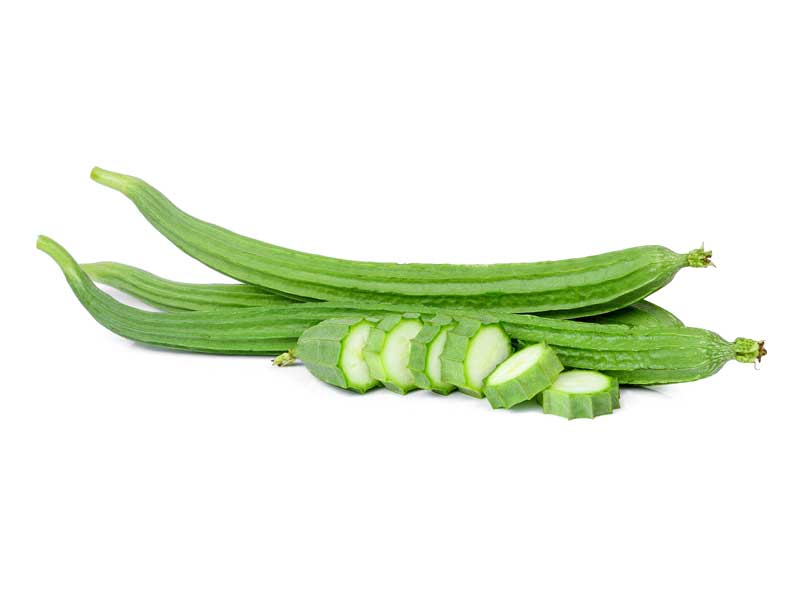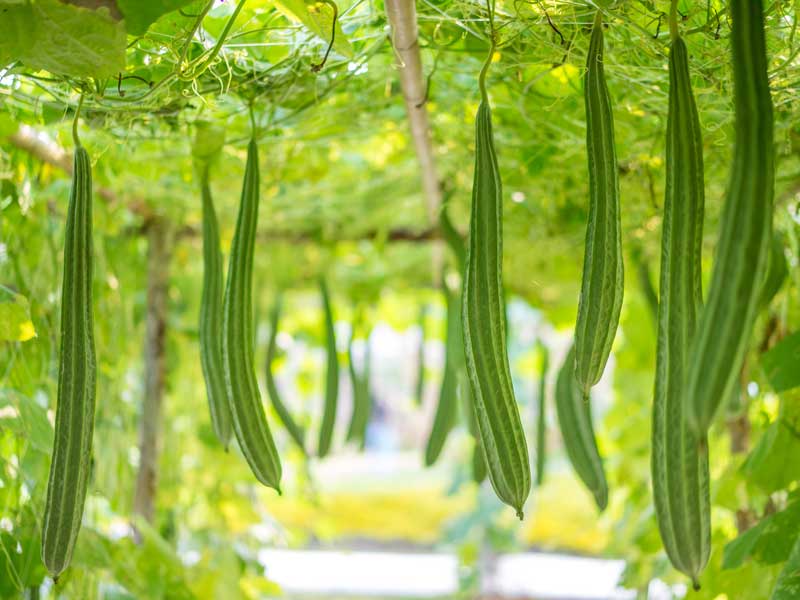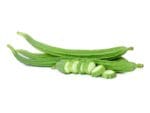LUFFA ‘Angled’ Vegetable Seeds
Botanical Name: Luffa acutangula
- Also known as ridged gourd or Chinese okra, valued for both culinary and household uses.
- Produces long, ribbed fruits up to 30–45 cm, tender and mild when young.
- Mature fruits can be dried to create natural sponges (loofahs).
- Fast-growing climbing vine requiring sturdy support structures.
- Thrives in warm, humid climates with long growing seasons.
- Ideal for stir-fries, soups, curries, and traditional dishes.
- Performs best in fertile, well-drained soil with consistent moisture.
Plant Details
- Plant Type: Annual climber in temperate regions, perennial in tropical climates
- Plant Height: Vines up to 3–5 m
Sowing Information
- Germination: 7–14 days (optimal soil temperature 25–30°C)
- Depth: 2–3 cm deep
- Position: Full sun
- Sow Where: Directly into garden beds or large containers; thin to the strongest seedlings
- Soil Type: Fertile, well-drained soil enriched with compost; pH 6.0–7.5
- Spacing: 60–90 cm between plants, rows 100–150 cm apart
Growing Tips
- Provide a strong trellis or vertical support for vines to climb.
- Keep soil consistently moist and mulch to retain moisture.
- Fertilise regularly with a balanced organic fertiliser to encourage vigorous growth and high yields.
- Harvest young fruits at 15–20 cm for the best flavour.
- Allow fruits to fully mature and dry on the vine for sponge production.
Harvest
60–75 days after sowing for young fruits; allow 120+ days for mature sponge luffas.
When to Sow Angled Luffa in Your Climate
| Climate Zone | Best Planting Time | Tips |
|---|---|---|
| Temperate | September–December | Sow after frost risk has passed and soil has warmed. |
| Subtropical | August–March | Plant during warm months. Water regularly in dry periods. |
| Tropical | Year-round (frost-free areas) | Best during dry season to prevent disease. |
| Cool | October–December | Sow in late spring when temperatures rise. |
| Arid | August–March | Plant in milder seasons. Mulch to retain soil moisture. |





